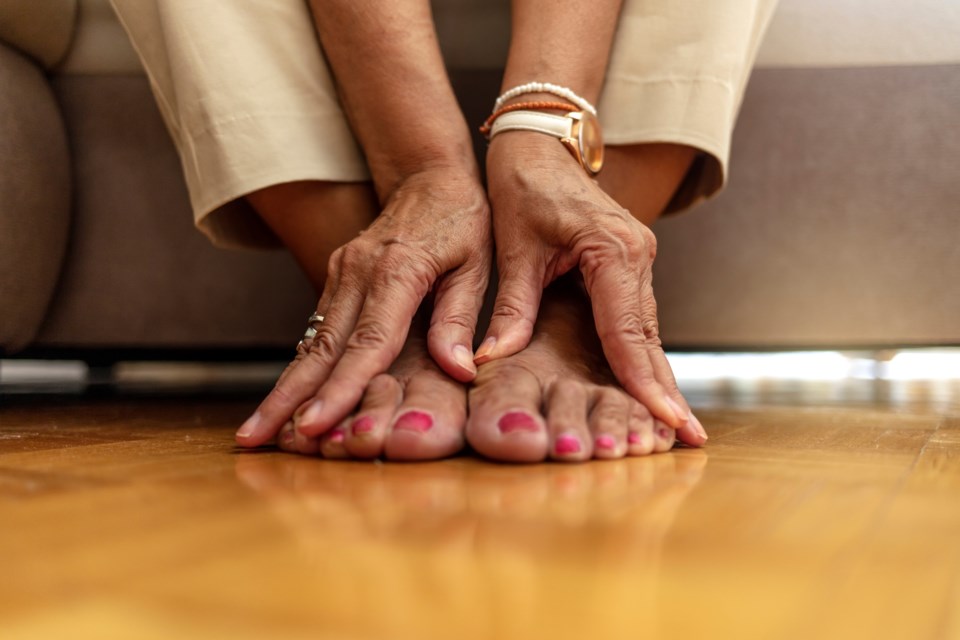According to Diabetes Canada, more than 11 million Canadians are living with diabetes or prediabetes. There are so many factors for individuals to manage, including food choices, blood sugar levels, and physical activity. The team of footcare specialists at The Stride Clinic sat down with me to explain how individuals with diabetes can take good care of their feet.
Prevention is Key
In Charlie Hutcheon’s experience, diabetic foot care is an incredibly important element of overall health for people living with the disease. The Primary Pedorthist for The Stride Clinic Barrie says, “The feet are often overlooked, despite the importance of foot health, especially with type 2 diabetes. Diabetic neuropathy and decreased circulation present challenges when it comes to seemingly minor issues of the feet. Prevention and early detection decrease the chances of larger issues arising.”
Start with 3 Easy Steps for Diabetic Footcare
The team at The Stride Clinic suggest three simple things that individuals living with diabetes can do to keep their feet as healthy as possible:
Regular Foot Checks
Early detection of potential problems is key and daily foot checks can help to identify problems before they get worse. Charlie recommends looking for callusing, cuts, sores, or other abnormalities. “If you are unable to check your own feet, you can use a mirror on the floor or have a partner/loved one check for you,” she says.
Professional foot checks are also important. “To ensure proper nail and skin care, we recommend that people living with diabetes routinely seek professional medical foot care,” says Charlie.
Appropriate Footwear
Choosing the right footwear is another easy way to keep feet staying healthy. “Studies have shown that appropriate footwear alone can reduce the risk of reoccurring ulcers or initial ulcers from forming by effectively distributing pressures across the foot. This reduces high areas of pressure that can result in callusing or blisters,” Charlie explains.
She also recommends that individuals who are living with diabetes never walk around barefoot, even inside the house. Slippers, sandals, or indoor shoes are essential to avoid unknowingly injuring your feet.
When choosing footwear, avoid shoes that have the seams on the inside. Seams can cause blisters, which can be dangerous.
“Our team of pedorthists can help you to find appropriate footwear in the right size and with the best features to meet your needs,” says Charlie.
Orthotics
In some cases, orthotics are needed to support your feet properly. “Custom made orthotics are designed to reduce high pressure areas and ensure proper biomechanics of the feet and lower limbs,” says Charlie. “This reduces callusing and rubbing that irregular walking patterns may cause. Our orthotics can be altered on site as your feet go through changes.”
Overall, it is important for those who are living with diabetes to not forget about their feet. Working with professional pedorthists at The Stride Clinic can help you to manage your diabetic footcare.
“One step at a time, you can be on your way to healthy feet!” says Charlie.
To find out more about diabetic footcare or to schedule an appointment with a certified pedorthist, visit The Stride Clinic online, call the Barrie clinic at (705) 735-1013, or the Orillia clinic at (705) 326-5808.
